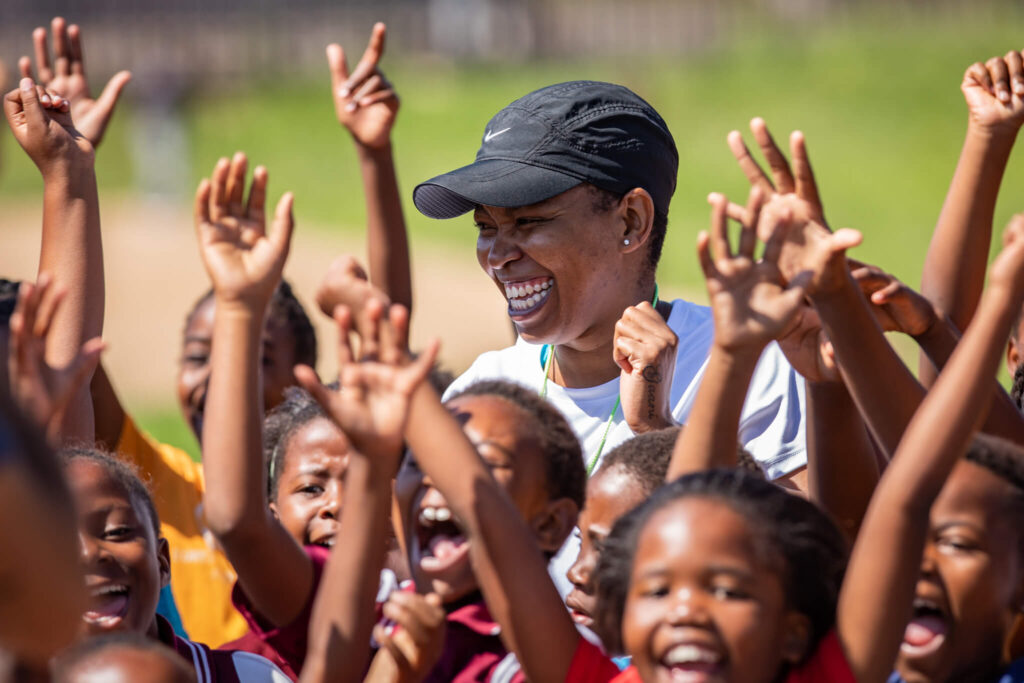How Nike Is Improving Communities’ Climate Resilience

|
Listen to this story:
|
What to know
- One year in, Nike’s Community Climate Resilience Program has already seen meaningful results to help mitigate the impacts of climate change and protect the future of sport.
- Leveraging an inaugural $2 million grant, Nike’s partner, Trust for Public Land, has helped revitalize more than 117,000 square feet of public park space in New York City, Chicago and Los Angeles, serving nearly 100,000 adults and children.
- Transforming concrete playgrounds into inviting urban green spaces, the teams planted more than 1,400 native plants and trees, helping to manage nearly 2.5 million gallons of stormwater runoff a year, among other objectives.
Each day, climate change is impacting athletes* all over the world. Climate change is not only a threat to sport, it’s also a critical social issue that exacerbates inequity and creates barriers to sport participation.
Knowing this, last year Nike launched the Community Climate Resilience Program to help provide access to urban green spaces and parks and increase sports participation in the communities that need it most. The program began with an inaugural grant of $2 million to Trust for Public Land (TPL) to fund U.S.-based projects in communities disproportionately impacted by climate threats.
One year in, the Community Climate Resilience Program has already seen meaningful results to help mitigate the impacts of climate change and protect the future of sport.
The partnership with TPL has helped revitalize more than 117,000 square feet of schoolyards and public park space in New York City, Chicago and Los Angeles that serve nearly 100,000 adults and children. The sites are all located in low-income neighborhoods that are predominately communities of color, have historically been underserved in park quality and space, and are more prone to flooding than parks in more affluent neighborhoods are. In transforming these sites into inviting urban green spaces, the teams will plant more than 1,400 native plants and trees and build capacity to manage nearly 2.5 million gallons of stormwater runoff a year, among other objectives.
Related Article: Nike Launches Community Climate Resilience Program with $2 Million Grant to Trust for Public Land
“Students can be inspired by being outside in these schoolyards, and they can express that in art, in music, in sports, and in how that outdoor space impacts their ability to succeed in the classroom,” says Carla Y. Rivera, Director of Facilities for Camino Nuevo Charter Academy. Her school is located in one of the neighborhoods in which Nike and TPL transformed a public park space, doubling the trees and vegetation on site and providing shade and cooling benefits to protect health and lessen energy demand.
Research shows us that these efforts make a real difference. Green spaces play a critical role in mitigating the climate- and inequity-driven effects of urban heat islands and flooding. Parks, especially those with dense trees and vegetation, can be as much as 17 degrees F (8 degrees C) cooler than the surrounding cityscape. Parks can also help disperse stormwater, minimizing the impact of climate-related natural disasters and improving water quality in communities.
“Trust for Public Land and Nike are uniquely positioned to shift the paradigm around climate resiliency and parks. We both believe that access to the outdoors for sport and play is a fundamental human need and essential to our health and well-being, and we know that revitalizing these spaces can help address the effects of climate change,” says Ronda Lee Chapman, Associate Vice President of Equity and Belonging, Trust for Public Land. “We’re working together to transform asphalt-laden schoolyards into places where kids can thrive.”
Among the 100 most populous U.S. cities, TPL data reveals that neighborhoods where most residents identify as people of color have access to an average of 43 percent less park space than predominately white neighborhoods do. Residents in low-income neighborhoods have access to 42 percent less park space than residents in high-income neighborhoods do. As climate change continues to increase risks from heat and flood, particularly in communities of color and low-income neighborhoods, purposefully designed green spaces and parks become a powerful driver of inclusion and climate resilience, opening up more access to sport and enhancing community health.
*If you have a body, you are an athlete.










